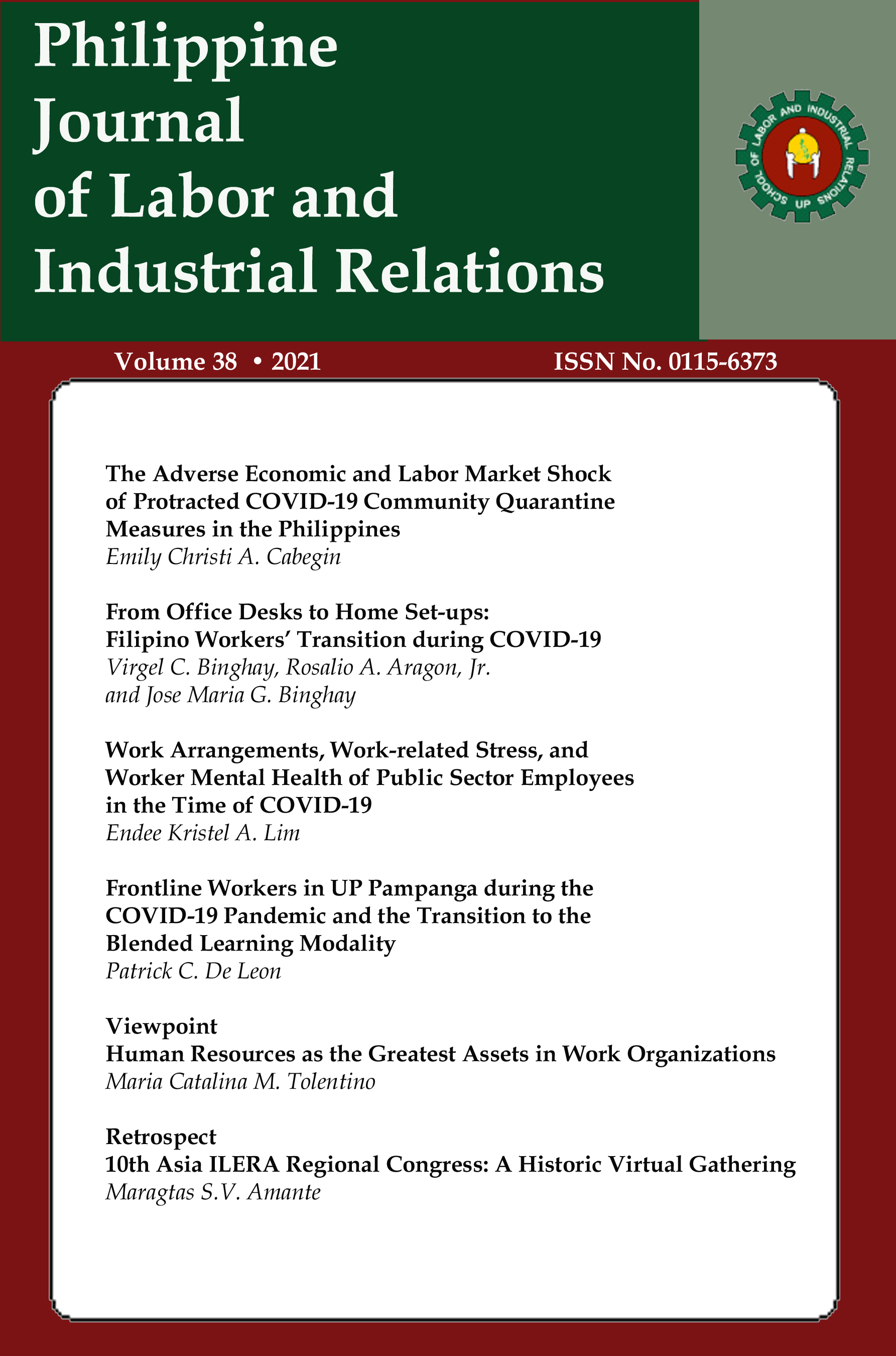From Office Desks to Home Set-ups: Filipino Workers’ Transition during COVID-19
Abstract
The COVID 19 epidemic has wreaked havoc on economies worldwide, forcing the Philippines into lockdown for almost a year and a half. This compelled commercial and public sector employers to adopt strategic work-from-home (WFH) arrangements to guarantee productive and dignified work during the epidemic. This study looks into the situation of teleworkers in the Philippines in light of the following variables: (1) WFH frequency, (2) physical work area, (3) social context, and (5) amenability to WFH. A piloted, selfconstructed questionnaire was used to poll 363 WFH respondents situated in Metro Manila. The approach is exploratory and does not use triangulation. Teleworkers have sophisticated technology and use tools like Email, Zoom, Viber, and Messenger to communicate. The most popular WFH schedules are five times a week, daily, and twice a week. Because many people live in tiny dwellings, the most frequent WFH set-up is in the bedroom rather than the living room. In a social environment, no teleworker lives alone. Moreover, half live with 2-4 people, then 5-7 people, and finally one
person. They also don’t have in-laws, live with a senior, and just a handful have a housekeeper. Teleworkers are generally open to WFH, especially those without children or elderly relatives. This research advises governments and companies to examine their WFH arrangements.


